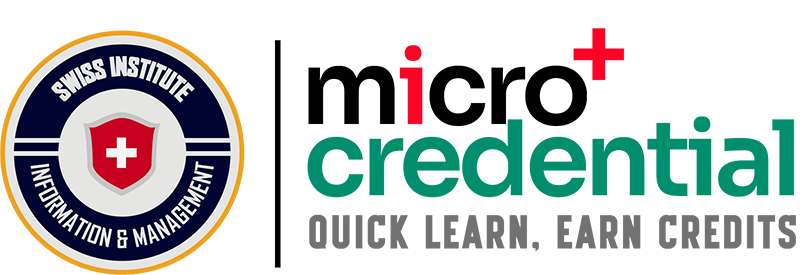Level 3 Award
in Coding and Website Development
Level 3 Award could transfer 20 credits and full tuition fees to Level 3 Diploma programs of SIMI Swiss.

Level 3 Award in Coding and Website Development
The aim of this award is to enable learners to understand the fundamental processes involved in developing simple programmes and applications, as well as details of basic website design.
Could transfer 20 credits and full tuition fee to the Level 3 Diploma in Information Technology of SIMI Swiss.
Learning Outcomes:
1. Understand the purpose and types of coding.
- 1.1 Identify popular programming languages that are used within computer systems.
- 1.2 Differentiate between High level and Low-level programming languages.
- 1.3 Explain how principles of computer programming are applied in different languages to produce software applications.
2. Understand web architecture and components.
- 2.1 Explain the web architecture and components which enable internet and web functionality
- 2.2 Discuss the security risks and protection mechanisms involved in website performance.
3. Be able to create interactive websites.
- 3.1 Be able to create or modify components of websites to meet business needs.
- 3.2 Demonstrate that a created website meets the defined requirements and achieves the defined purpose.
Topics:
Understand types of programming languages and their uses
Course Coverage
- High and low-level programming languages for solving specific problems:
- Procedural: e.g., C, Perl®, PythonTM
- Object-oriented: e.g., C++, C#®, Java®
- Event-driven: e.g., Visual Basic®
- Machine: e.g., Assembler
- Markup: e.g., HTML
- Comparison factors of programming languages:
- Hardware and software requirements
- Special devices required
- Performance
- Preferred application areas
- Development time
- Ease of development
Understand web architecture and components
Course Coverage
- Web architecture: Internet Service Providers (ISP), web hosting services, domain structure, domain name registrars, worldwide web.
- Components:
- Hardware: web, mail, proxy servers; routers.
- Software: browsers, email clients.
- Protocols:
- Transport and addressing: TCP/IP
- Application layer: HTTP, HTTPS, SMTP
- Web functionality: Web 1.0, Web 2.0, blogs, online applications, cloud computing.
- Security:
- Risks: hacking, viruses, identity theft.
- Protection mechanisms: firewalls, Secure Socket Layers (SSL), strong passwords.
Develop web design skills
Course Coverage
- Design software selection: standard and non-standard tools.
- Formatting and editing techniques:
- Common web functions: text, graphics, fonts, colour schemes, images.
- Simple HTML: editor programs, file extensions, tags (e.g., <html>, <p>, <body>, closing tags).
- Interactive elements: rollover images, submit buttons.
- Optimisation: image, video, animation, sound, file size, format, compression.
- Good practices:
- File and folder management.
- Naming conventions.
- Documentation of developments.
- Accessibility: ensuring usability for users with disabilities (e.g., readability, colour schemes, subtitles).
Plan and present web solutions
Course Coverage
- Plan and present:
- Format of presentation.
- Content and target audience.
- Obtain feedback from the audience.
- Recommend website component changes:
- Appropriateness.
- Clarity, content, speed, navigation, aesthetics.
Review and evaluate website components
Course Coverage
- Comparison of updated website components against business needs:
- Functionality and interactivity.
- Presenting the solution to stakeholders.
- Feedback methods:
- Questionnaires, verbal discussion.
- Criteria for feedback: appropriateness, clarity, content, speed, navigation, font choice, colour combinations.
- Improvements: design, clarity, interactive response, functionality.
Indicative reading list
- Bell, A. (2019). Computer programming : Fundamentals for absolute beginners.
- Duckett, J. (2011). HTML & CSS: Design and Build Websites (HTML and CSS). John Wiley & Sons Incorporated.
- Felleisen, M. et al (2018) How to design programs: an introduction to programming and computing. 2nd ed. MIT Press
- Robbins, J.N. (2018). Learning web design : a beginner’s guide to HTML, CSS, Javascript, and web graphics. Sebastopol, Ca: O’Reilly.
Entry requirements
- Applicants must be at least 16 years old.
- Completion of full secondary education is required.
English requirements
If a learner is not from a predominantly English-speaking country, proof of English language proficiency must be provided.
- Common European Framework of Reference (CEFR) level B2 or equivalent
- Or A minimum TOEFL score of 101 or IELTS 5.5; Reading and Writing must be at 5.5 or equivalent
- Or A minimum Pearson Test of English Academic (PTE Academic) score of 51 or equivalent
The SIMI Swiss reserves the highest decision-making power for admission whether to accept or not accept after a specific review of each candidate’s profile to ensure that they can comprehend and gain benefits when participating. For the fake university or diploma mills, University Partners shall not be accepted.
After graduating with Level 3 Award, students receive all certified documents from the SIMI Swiss.
Certified Documents:
- e-Certificate from the Swiss Information and Management Institute (SIMI Swiss).
- Hard copy certificate from the Swiss Information and Management Institute (SIMI Swiss) – Optional.
- Accreditation of Prior Experiential Learning for Qualifications (APEL.Q) certified from SIMI Swiss for credit and tuition fee transfer.
Because the program is accredited and recognized, students can easily use certified in the working environment and have many opportunities for career advancement. In addition, in case if you want to study for a SIMI degree or university partner degree, students can convert all credits and the full paid tuition fee.
The SIMI Swiss’ Level 3 Award means:
The SIMI Swiss Level 3 Award is a qualification at the foundational level and is equivalent to the following:
- Level 3 Certificate of the Regulated Qualification Framework (RQF) in the UK
- Level 6 Certificate of the Scottish Credit and Qualifications Framework (SCQF)
- Level 3 Certificate of the Credit and Qualifications Framework for Wales (CQFW)
- Level 3 Certificate of the European Qualifications Framework (EQF)
- Level 4 Certificate of the Australian Qualifications Framework (AQF)
- Level 3 Certificate of the ASEAN Qualifications Reference Framework (AQRF)
- Level 4 Certificate of the African Continental Qualifications Framework (ACQF)
Students can convert all credits and the full tuition fee when participating in the SIMI Swiss and/or University Partners academic programs if they want to study for an academic degree.
Credits transfer:
Learners can accumulate 20 credits from the Level 3 Award program when participating in the Level 3 Diploma program. Please see the credit transfer policy HERE
Tuition fee transfer:
When participating in the Level 3 Diploma program, students who have graduated 1 Level 3 Award will receive a discount of full tuition fee which you paid. Please see the tuition fee transfer HERE
The SIMI Swiss micro-credential program allows for the transfer of credits and tuition fees into full degree programs from SIMI Swiss and/or its university partners. SIMI Swiss reserves the right to limit admissions once the number of students exceeds the quotas.
Apply Policy:
- To participate in the SIMI Swiss micro-credential program, students need to meet the entry criteria corresponding to each level. Please see the “Entry” tab for more details.
- SIMI Swiss will not accept applicants if their entry qualifications are from diploma mill universities or schools/universities that are not accredited.
- English is not a mandatory entry requirement for Micro Credential programs, but candidates need to ensure that English is used in reading documents, listening to lectures, and doing assignments. Candidates should note that English is a mandatory requirement when switching to an academic program at SIMI Swiss and University Partners.
Apply Process:
- Choose the program that suits your requirements.
- Email your application to support@simiswiss.ch with all the required documents. You can download the application form here.
- Our admission department will contact you and guide you through further processes if the registration documents need to be supplemented.
- SIMI Swiss will issue the Letter of Acceptant (LOA). You wil proceed to the next steps according to the instructions and pay tuition fee.
- SIMI Swiss will issue a student confirmation letter, login account to the e-learning system and related documents.
- You have become an official SIMI Swiss student and enjoy your study journey.
The SIMI Swiss micro-credential program is fully online, allowing you to study anytime, anywhere. You have the option to attend live classes with SIMI Swiss. The final exam will be uploaded to the system and evaluated by the academic panel of SIMI Swiss. Students must submit assignments on time; failure to do so will result in the student being considered to have discontinued the program.
Pricing Plans
Take advantage of one of our non-profit professional certified programs with favorable terms for your personal growing carreers.
- Full online videos
- e-Books
- Self-study contents
- Online tutor videos
- Assignment guide
- e-Certificate
- Hard copy certificate
- Accreditation & Recognition certified from University Partners
- Deliver hard copy certificate and all certified documents to your home
- Transfer full credits & tuition fees to equivalent academic programs
- Get more support tuition fees and scholarships when becoming SIMI' international students
- (*) In the event that you receive a scholarship or discount, the fee you should transfer is the amount you actually paid.
SWISS MICRO CREDENTIAL
Contact us
If you interested this micro credential course, please feel free to contact with us! Please note that this program is a not for profit and learning with full online model.
